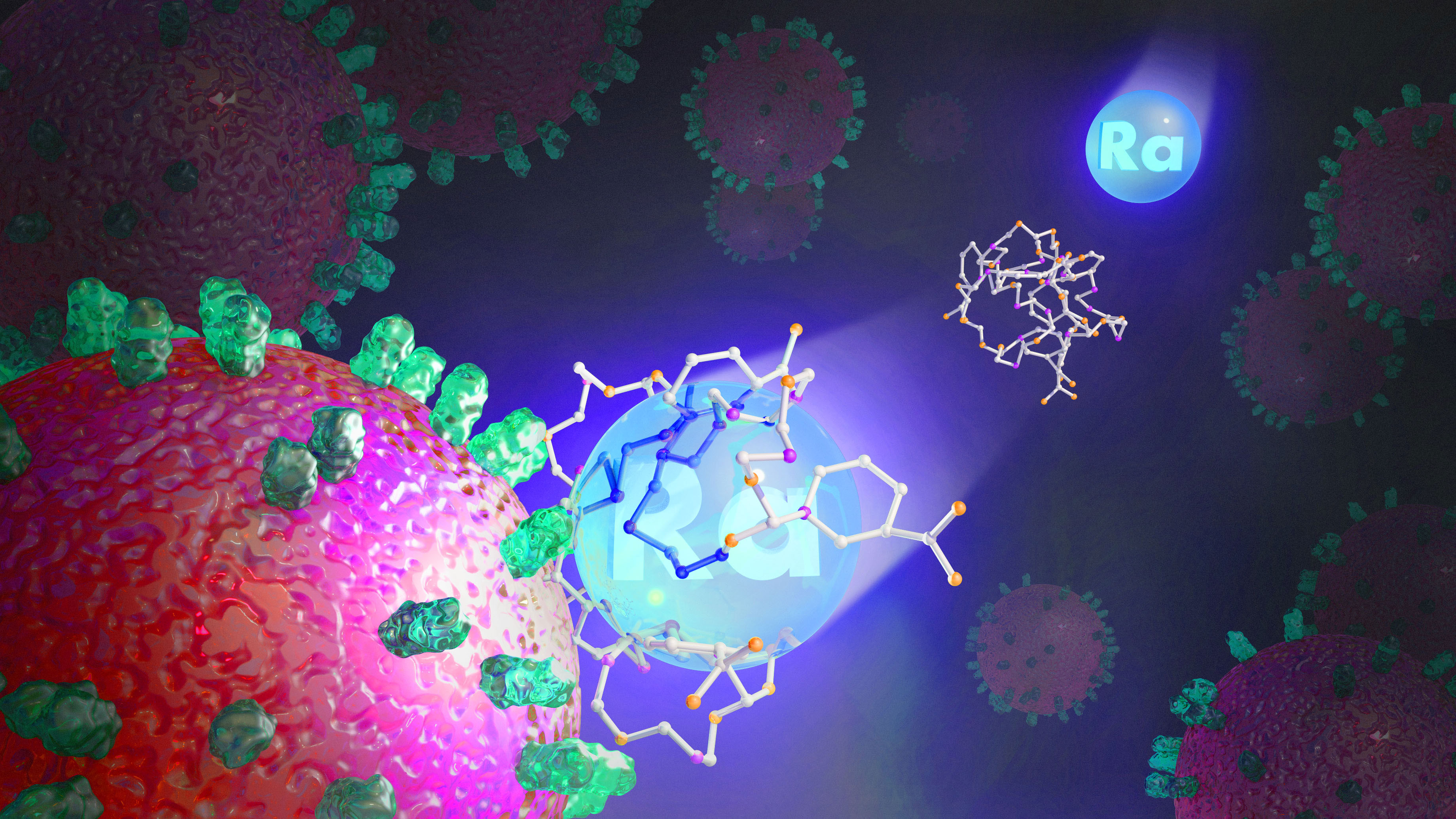Transforming Cancer Diagnosis and Treatment with Cerium/Lanthanum-134
Researchers advance the use of cerium/lanthanum-134 for medical scans in actinium-225 cancer therapy.

The Science
Actinium-targeted alpha radiotherapy is a promising approach for treating metastatic cancers, including prostate cancer. This approach requires doctors to obtain images of the radiotherapy agent as it moves to tumors, a process called molecular imaging. Attaching a radioisotope to a chemical compound is called radiolabeling. Conducting a molecular imaging study with a radiolabeled compound allows doctors to plan treatments. However, this imaging step is not possible with therapeutic substances labeled with actinium-225 (Ac-225). A desired imaging isotope must be similar to Ac-225’s half-life and chemistry and also provide a decay emission that allows for imaging; few such isotopes exist. Researchers have proposed using cerium/lanthanum-134 as an imaging material for Ac-225. This study examined the performance of cerium-134 (Ce-134) as an imaging surrogate in combination with Ac-225.
The Impact
To make cancer treatments successful, doctors must perform imaging to help guide their therapy decisions. Ac-225 therapy demonstrates great promise for prostate and other cancers. To make this radioisotope more useful, this research developed a single molecular platform for imaging and radiotherapy using Ac-225 and Ce-134. The results demonstrate similar tumor uptake for Ce-134 and Ac-225 in prostate cancer models. This means that imaging with Ce-134-labeled radiopharmaceuticals has the potential to guide the therapeutic dosing of Ac-225-labeled therapy agents.
Summary
Theranostics is an emerging field combining imaging and therapy, allowing a personalized approach to treating cancer and other diseases. The use of theranostics in nuclear medicine has been shown to be highly effective in treating certain types of cancer, such as neuroendocrine tumors and prostate cancer. Research has shown that actinium-225 (half-life = 9.9 days) based targeted alpha therapies are effective in treating metastatic castration-resistant prostate cancers, significantly improving patient survival and disease remission. Unfortunately, localization and accurate dose estimation are a considerable challenge due to the lack of imaging isotopes with similar half-life and chemistry to actinium-225. Recently, researchers developed a cerium/lanthanum-134 pair as an imaging surrogate to overcome these challenges.
In this study, researchers from the University of California, San Francisco and the University of Virginia developed a robust cerium-134 radiolabeling methodology using the chelators Macropa and DOTA. They also applied the optimized method for prostate cancer targeting agents PSMA-617 and antibody YS5. Encouragingly, the localization of cerium/lanthanum-134 Macropa-PEG4-YS5 demonstrated identical distribution in most tissues along with tumors except for the liver and spleen. The researchers believe this is the first report of a comprehensive study comparing the chemistry and localization of Ce-134 and Ac-225, starting from chelators to tumor-targeting agents. These studies support the development of Ce-134 radiopharmaceuticals for cancer imaging as a companion paired with alpha particle radiotherapeutics. Both Ac-225 and Ce-134 are available from the Department of Energy Isotope Program.
Contact
K. Naidu Bobba
Department of Radiology and Biomedical Imaging, University of California, San Francisco
kondapanaidu.bobba@ucsf.edu
Henry F. VanBrocklin
Department of Radiology and Biomedical Imaging, University of California, San Francisco
henry.vanbrocklin@ucsf.edu
Robert R. Flavell
Department of Radiology and Biomedical Imaging, University of California, San Francisco
robert.flavell@ucsf.edu
Funding
This study was supported by the Department of Energy Office of Science, Office of Isotope R&D and Production, and by the Department of Defense.
Publications
Bobba K. N., et al., Evaluation of cerium/lanthanum-134 as a PET imaging theranostic pair for 225Ac alpha radiotherapeutics. Journal of Nuclear Medicine, 64, 7 (2023). [DOI: 10.2967/jnumed.122.265355]
Highlight Categories
Performer: University
Additional: Collaborations , Non-DOE Interagency Collaboration



